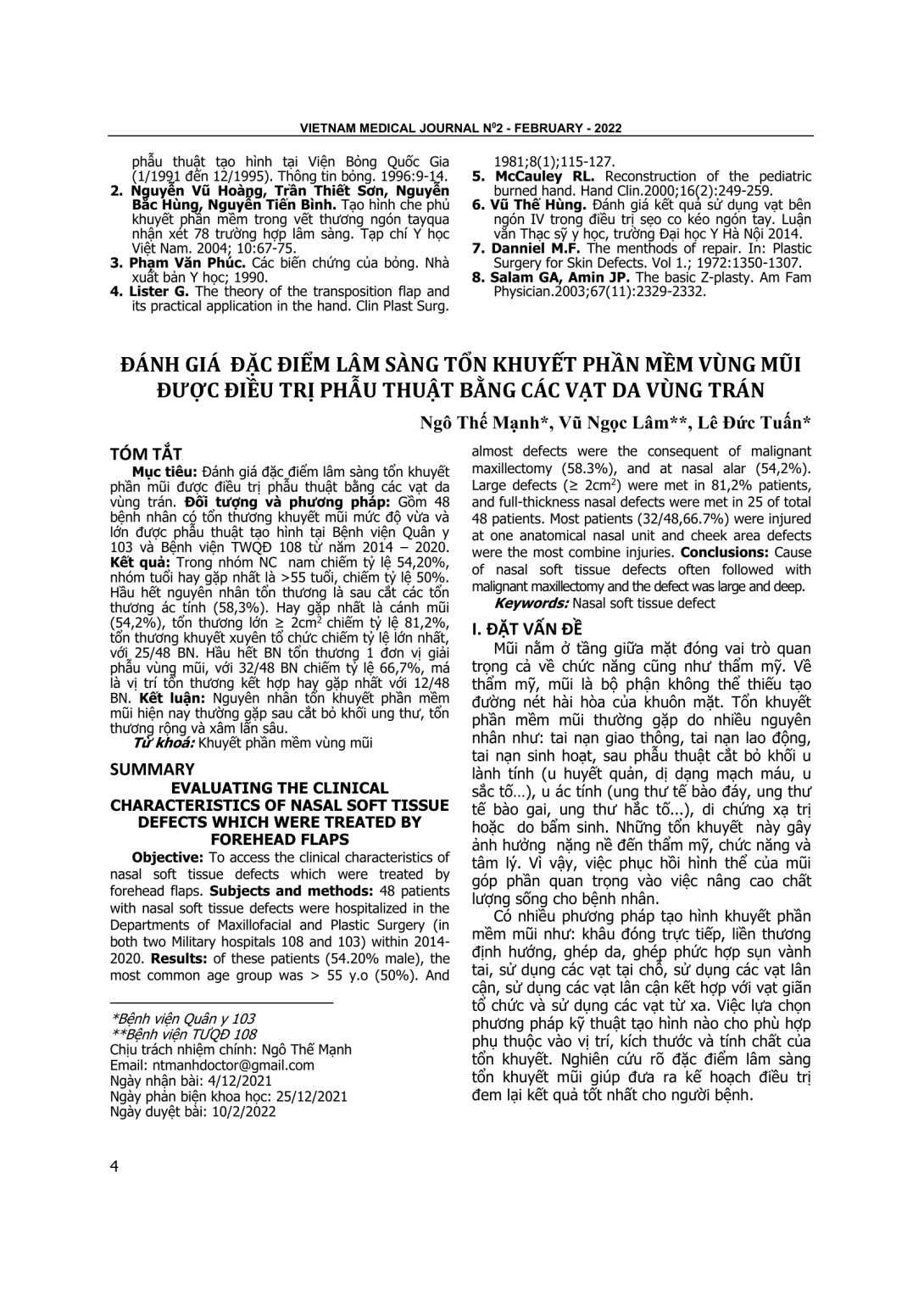
Đánh giá đặc điểm lâm sàng tổn khuyết phần mũi được điều trị phẫu thuật bằng các vạt da vùng trán. Đối tượng và phương pháp: Gồm 48 bệnh nhân có tổn thương khuyết mũi mức độ vừa và lớn được phẫu thuật tạo hình tại Bệnh viện Quân y 103 và Bệnh viện TWQĐ 108 từ năm 2014 – 2020. Kết quả: Trong nhóm NC nam chiếm tỷ lệ 54,20%, nhóm tuổi hay gặp nhất là >55 tuổi, chiếm tỷ lệ 50%. Hầu hết nguyên nhân tổn thương là sau cắt các tổn thương ác tính (58,3%). Hay gặp nhất là cánh mũi (54,2%), tổn thương lớn ≥ 2cm2 chiếm tỷ lệ 81,2%, tổn thương khuyết xuyên tổ chức chiếm tỷ lệ lớn nhất, với 25/48 BN. Hầu hết BN tổn thương 1 đơn vị giải phẫu vùng mũi, với 32/48 BN chiếm tỷ lệ 66,7%, má là vị trí tổn thương kết hợp hay gặp nhất với 12/48 BN. Kết luận: Nguyên nhân tổn khuyết phần mềm mũi hiện nay thường gặp sau cắt bỏ khối ung thư, tổn thương rộng và xâm lấn sâu.
To access the clinical characteristics of nasal soft tissue defects which were treated by forehead flaps. Subjects and methods: 48 patients with nasal soft tissue defects were hospitalized in the Departments of Maxillofacial and Plastic Surgery (in both two Military hospitals 108 and 103) within 2014-2020. Results: of these patients (54.20% male), the most common age group was > 55 y.o (50%). And almost defects were the consequent of malignant maxillectomy (58.3%), and at nasal alar (54,2%). Large defects (≥ 2cm2) were met in 81,2% patients, and full-thickness nasal defects were met in 25 of total 48 patients. Most patients (32/48,66.7%) were injured at one anatomical nasal unit and cheek area defects were the most combine injuries. Conclusions: Cause of nasal soft tissue defects often followed with malignant maxillectomy and the defect was large and deep.
- Đăng nhập để gửi ý kiến
